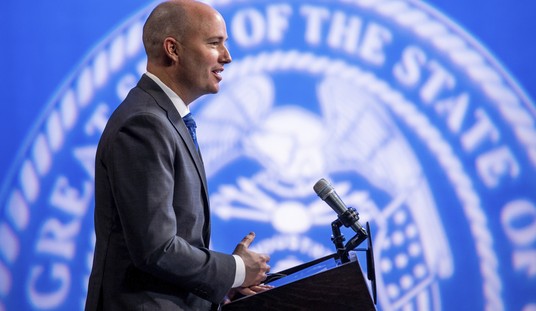This Week in American Military History:
Aug. 1, 1943: Operation Tidal Wave — also known as the Raid on Ploesti — commences: 177 U.S. Army Air Forces B-24 Liberators flying 1,000-plus miles from their bases in Libya, attack the heavily defended Ploesti oil fields in Rumania.
The raid is flown against waves of counterattacking enemy planes, heavy antiaircraft fire, and at treetop level above the target area. Many of the B-24 crews are forced to fly through thick black smoke over targets just-attacked by their comrades ahead of them, and they are caught in the bursts and shock waves of delayed-action bombs.
Damage will be heavy on the oilfields said “to be supplying 60 percent of Germany’s crude oil requirements,” according to the National Museum of the U.S. Air Force. But USAAF casualties will also be high: “Of 177 planes and 1,726 men who took off on the mission, 54 planes and 532 men failed to return.”
Five Medals of Honor will be awarded for the daring raid. Recipients include: Col. Leon W. Johnson, Col. John R. Kane, Lt. Col. Addison E. Baker (posthumous), Maj. John L. Jerstad (posthumous), and 2nd Lt. Lloyd H. Hughes (posthumous).
Aug. 1, 1955: The famous U-2 high-altitude reconnaissance aircraft (yes, the same type of aircraft piloted by CIA pilot Francis Gary Powers when he was shot down over the Soviet Union by a surface-to-air missile in 1960) makes its first-ever flight above Groom Lake (Area 51), Nevada.
Aug. 3, 1958: USS Nautilus — the world’s first nuclear-powered submarine and the U.S. Navy’s sixth so-named vessel — becomes the first “ship” to cross the North Pole. The submarine’s simple transmission is, “Nautilus 90 North.”
Aug. 4, 1790: Congress approves Treasury Secretary Alexander Hamilton’s proposal to “build ten cutters to protect the new nation’s revenue,” establishing the Revenue Cutter Service – first of the predecessor services of the modern Coast Guard. Thus today will become the officially recognized birthday of the U.S. Coast Guard.
Aug. 5, 1864: One of the great makers of Naval tradition, Rear Admiral David Glasgow Farragut, commanding a strike force of 14 wooden warships and a handful of ironclads, attacks and decisively defeats Confederate Naval forces under Adm. Franklin Buchanan and the Confederate forts defending Mobile Bay, Alabama. It is during this action that Farragut purportedly utters the command, “Damn the torpedoes! Full speed ahead!,” or the more likely command, “Damn the torpedoes! Four bells. Captain [Percival] Drayton, go ahead! [Lt. Commander James] Jouett, full speed!”
Aug. 6, 1945: A single American B-29 bomber, Enola Gay, flying from the island of Tinian drops the first-ever atomic bomb used in war on the Japanese city of Hiroshima.
At 8:15 a.m., the bomb, codenamed Little Boy, detonates nearly 2,000 feet above the city center instantly killing between 80,000 and 140,000 people, and seriously wounding another 100,000. According to Hiroshima & Nagasaki Remembered, “The blast wave shattered windows for a distance of ten miles and was felt as far away as 37 miles. Hiroshima had disappeared under a thick, churning foam of flames and smoke. The co-pilot, Captain Robert Lewis, commented, ‘My God, what have we done?’”
In three days, Nagasaki will suffer the same fate.
Japan’s ability to wage war is finished.
In time, the bombings will be decried as cruel and excessive in terms of the lives lost; as if to suggest all war is not both cruel and excessive to the vanquished. Indeed, nuclear weapons are horrible. What is incalculable, however, is the number of American lives saved by decisively ending the war with the bombs before having to invade the Japanese mainland.
Aug. 7, 1942: Exactly eight months to the day after the Japanese attack on Pearl Harbor, elements of the soon-to-be-famous 1st Marine Division – under the command of Maj. Gen. Alexander Archer “Sunny Jim” Vandegrift (a future Marine Corps commandant) – begin landing on Guadalcanal in the southern Solomon islands, launching America’s first large-scale ground offensive of World War II.
Simultaneous landings take place on the nearby islets of Tulagi, Gavutu, Tanambogo, and Florida Island. The landings are the first decisive ground actions aimed at eating away at the Japanese who have extended their lines deep into the Western Pacific and threaten Australia.
Vandegrift is destined to receive the Medal of Honor, and he will become the first Marine officer on active duty to attain four-star rank.
Aug. 7, 1964: Congress passes the Gulf of Tonkin Resolution, which “approves and supports the determination of the President, as Commander in Chief, to take all necessary measures to repel any armed attack against the forces of the United States and to prevent further aggression.”
The Vietnam War is officially on.
Aug. 7, 1782: Gen. George Washington creates two badges of distinction for enlisted soldiers and noncommissioned officers: The first is a chevron signifying three years of service (two chevrons for six years) “with bravery, fidelity, and good conduct.” The second is a medal – the Badge of Military Merit – for “any singularly meritorious action.”
According to The U.S. Army Center of Military History, the badge was the “‘figure of a heart in purple cloth or silk edged with narrow lace or binding.’ This device was affixed to the uniform coat above the left breast and permitted its wearer to pass guards and sentinels without challenge and to have his name and regiment inscribed in a Book of Merit. The badge specifically honored the lower ranks, where decorations were unknown in contemporary European Armies.”
Though the standards for recipients have changed, the medal exists today as the Purple Heart, and is awarded to “any member of an Armed Force who, while serving with the U.S. Armed Services after 5 April 1917, has been wounded or killed, or who has died or may hereafter die after being wounded.”
Let’s increase awareness of American military tradition and honor America’s greatest heroes by supporting the Medal of Honor Society’s 2010 Convention to be held in Charleston, S.C., Sept. 29 – Oct. 3, 2010 (for more information, click here).








Join the conversation as a VIP Member